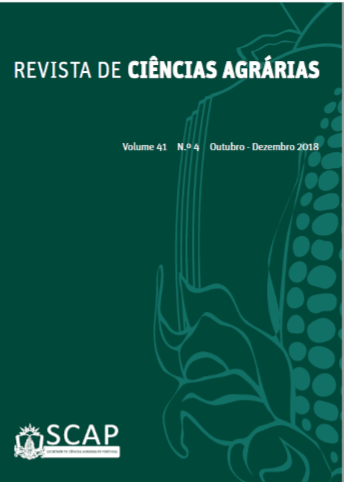Manejo da adubação nitrogenada no capim-mombaça em função de fontes e doses de nitrogênio
DOI:
https://doi.org/10.19084/RCA18131Resumo
O nitrogênio é o nutriente que mais influencia na produtividade e na qualidade das pastagens. Objetivou-se estudar a condução de uma pastagem com alto potencial produtivo utilizando fontes e doses de nitrogênio (N), visando contribuir para o desenvolvimento da pecuária, quantificando-se a produtividade de matéria seca (PMS), os teores de proteína bruta (PB), de fibra em detergente neutro (FDN), de fibra em detergente ácido (FDA), e índice de clorofila foliar (ICF – SPAD). O experimento foi desenvolvido em Ilha Solteira - SP, em um Argissolo Vermelho Escuro Eutrófico, de textura arenosa. O delineamento experimental foi em blocos casualizados com quatro repetições, sendo cinco fontes de nitrogênio: ureia, sulfonitrato de amônio, nitrato de amônio, sulfato de amônio; e sulfammo - fonte de N de lenta liberação associada ao carbonato de cálcio de algas marinhas. A ureia foi utilizada em cinco doses de N (0, 50, 100, 150 e 200 kg ha-1 por corte), para se averiguar a eficiência dos outros fertilizantes nitrogenados, os quais foram testados em dose única, para fornecer 100 kg ha-1 de N, por corte. A utilização das fontes sulfonitrato de amônio e sulfammo, na dose de 100 kg ha-1, foram mais eficientes em disponibilizar nitrogênio ao capim-mombaça, aumentando o ICF e PB, com reflexo em maior PMS.


